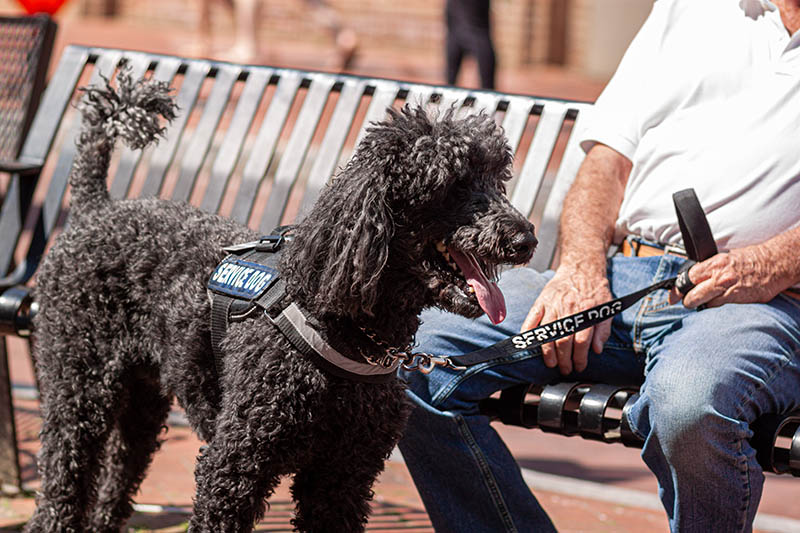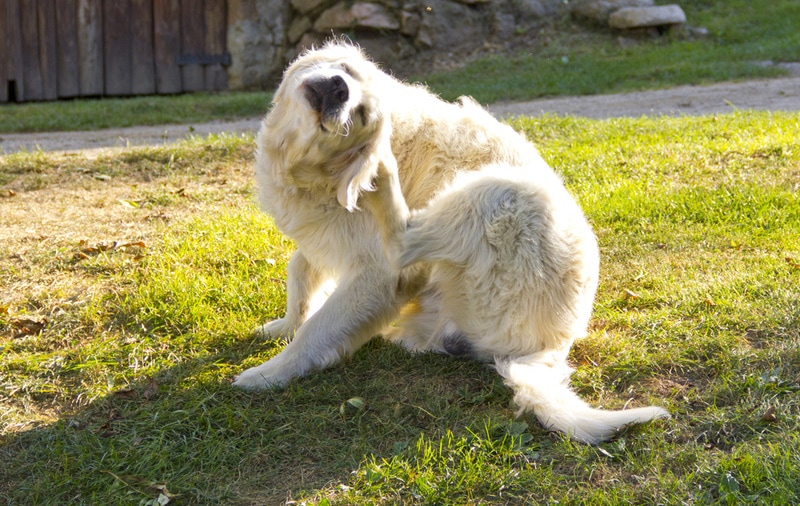When Can You Start Running With a Puppy? Vet-Approved Tips
Updated on
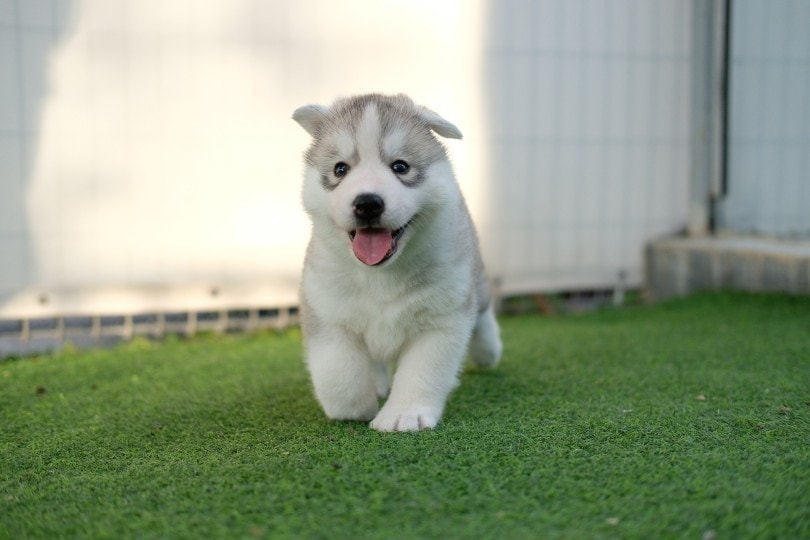
If you’re a runner and a dog owner, it might seem like having a dog to run with will make the experience far more enjoyable than running alone. You may have big dreams of your puppy growing into a dog that participates in your favorite activities, like running.
The main concern is starting too young. Most experts agree that a puppy should be at least 9 months old before you start running with them, for large breeds even later. To safely include your puppy in your runs, it’s important to fully understand the risks that running with a young puppy poses to them and the best ways to incorporate activity into your puppy’s daily life.
When Can You Start Running With a Puppy?
Most veterinarians recommend waiting until your puppy is at least 9 months of age before you start running with them. However, this age varies greatly based on the musculoskeletal development of your dog. For large and giant breed dogs, they may not be ready to safely go for runs until they are over a year of age.
The mindset behind waiting until the musculoskeletal system is developed is that it allows your puppy’s body to be fully mature and ready for a weight-bearing activity like running. Running on an underdeveloped musculoskeletal system can damage the growth plates, joints, and long bones.
A great human example to put this into perspective is the Olympic gymnast Mary Lou Retton. She began tumbling and gymnastics lessons in kindergarten when her musculoskeletal system was still very much in development. She was a prime athlete but required a hip replacement in her thirties because of the damage done to her musculoskeletal system through excessive training, mostly on an underdeveloped body.
Is it Safe for My Puppy to Run Yet?
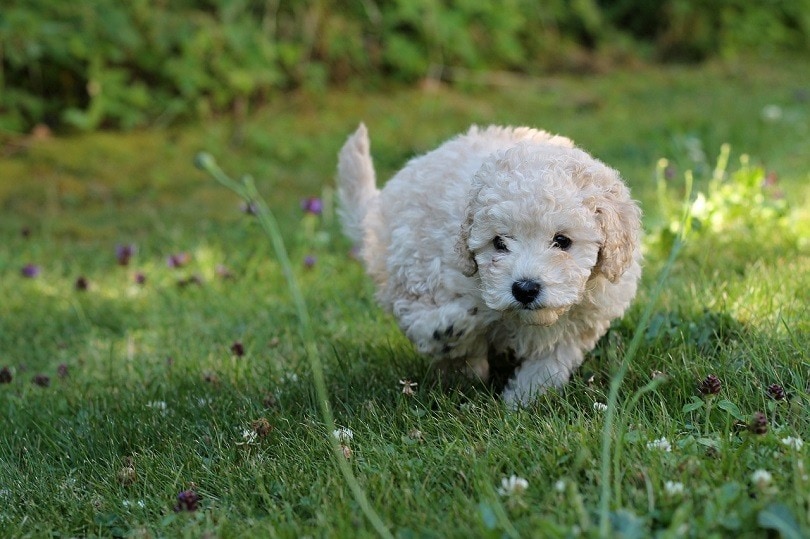
It’s safe and totally normal for your puppy to run. However, you should be in charge of where this running occurs. Your puppy running around your house or backyard is less likely to cause damage to the musculoskeletal system than running for 3 miles on pavement.
What this means is that you need to use good judgment when you have control over your puppy’s running. Aim to spend the first few months of life focusing on training and proper socialization. You can start working on leash skills, including training your puppy to listen to your commands in distracting situations. Your puppy should also know how to heel and have good leash manners before you begin working on running.
How Far Can My Puppy Run Once We Get Started?
The distance you choose to run with your puppy will be up to your best judgment, but you should take your puppy’s breed and fitness level, as well as the weather into account. Flat-faced breeds, like French Bulldogs, and even short-snouted breeds, like American Staffordshire Terriers, may have difficulty working up to running long distances, especially in hot temperatures. Unfortunately, many of these dogs are not ever capable of becoming good running partners.
When your puppy is old enough to start running with you, it’s best to start small. Think of it like training for a marathon. You wouldn’t go out and attempt to run a marathon distance on day one of being a runner. You start small and work your way up, and you should do the same for your puppy. Provide plenty of time for rest and provide water as needed. While a mile might not seem like a long distance for you to run, it requires a lot of effort for a 15-pound puppy to run a mile.
What Else Should I Consider?
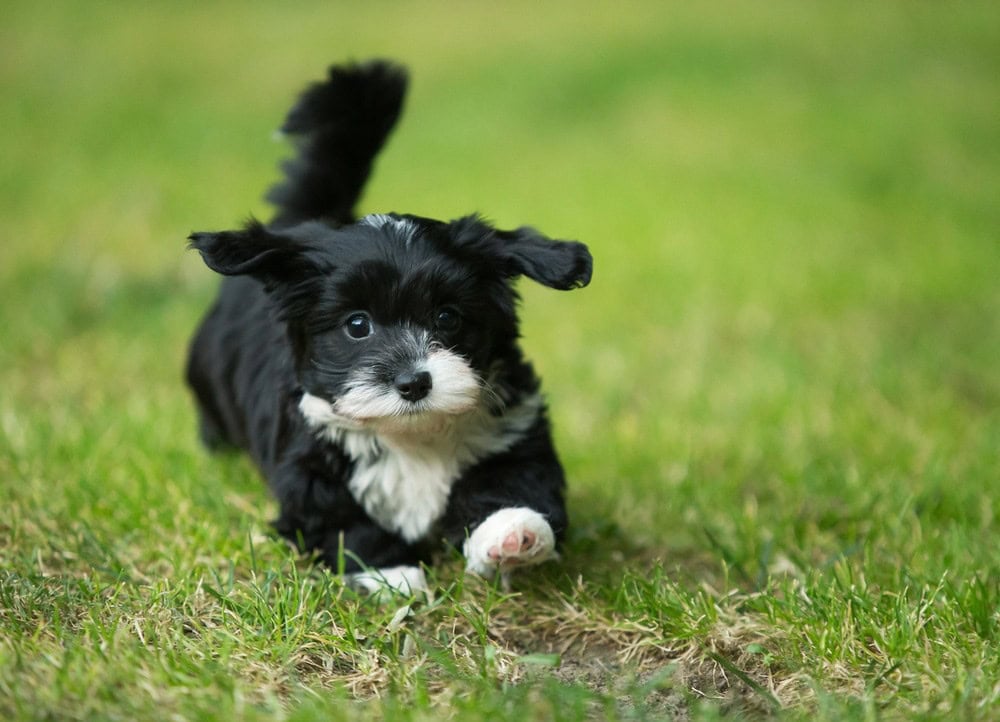
Many people mistakenly think that their puppy or dog will let them know when they are tired and need a break. However, many dogs will keep going as long as their owner is going. They want to be part of the action, and they are loyal friends, so many dogs will follow their owners until they over-exert themselves. This can be a serious problem in extreme temperatures, especially heat. It can also lead to injuries, even in older dogs with well-developed musculoskeletal systems.
If your dog is a breed that is prone to joint problems, it may be a good idea to have your puppy checked over and cleared by a vet before you start running. For dogs with hip and elbow dysplasia, running, especially on hard surfaces, can be detrimental to their joints, leading to severe problems. Breeds like German Shepherds, Labradors, Great Danes, Rottweilers, Golden Retrievers, Saint Bernards, and other large and giant breeds are often genetically prone to hip and elbow dysplasia, especially when proper breeding practices are not followed.
Final Thoughts
Running can be a fun activity for you and your puppy and can help burn excess energy that may otherwise lead to mischief, boredom, and frustration. However, young puppies should not be taken for runs, especially on hard or slick surfaces. The musculoskeletal system needs an opportunity to grow and develop properly before weight-bearing activities are started. Otherwise, you may unintentionally allow your dog’s musculoskeletal system to become damaged and grow improperly. This can even lead to lifelong pain and debility.
Start your dog young on leash training and basic obedience commands. This will allow you to have a well-behaved dog when you can start running with them. As always, when in doubt, talk to your vet about when to start running with your puppy. There is not a set answer since the circumstances vary quite a bit between dogs, but most vets recommend waiting until your dog is at least 9 months of age.
Featured Image Credit: albertlsy7101, Pixabay






